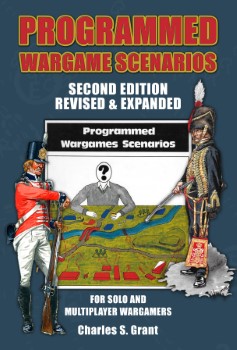The third part in the continuing battle, based on scenario 2 from Programmed Wargame Scenarios.
An advantage of playing a solo game is that you can change the rules halfway the game. So, after some discussion regarding unit-based vs commander-based activation, I decided to switch to commander-based activation. This allows for more units to be activated, but also gives Red (with more units and 4 commanders) a fairer chance of activating units proportional to its strength.
Moreover, I also decided that the +3 bonus commanders gave on top of their 7+ baseline score was a bit too generous, so I downgraded those to +2. See also here for a full analysis on our sister blog Wargaming Mechanics.
Back to the game!
The orders didn't change, although I decided the feint attack on Red's left flank had run long enough and it was time for Red to push forwards in the centre. I also decided Red's right flank should move forward a bit to protect Red's centre flank.
 |
| Red's centre is pushing forward. The artillery is also (re)deployed such that Red's left flank can be attacked and the attacking force is protected. |
 |
| The cavalry on Red's right flank is moving forward to protect the right side of the centre force, although it is not participating in the attack itself - as per the programmed orders. |
As for Blue, they were happy to return fire as much as possible. On Blue's left flank I decided their would be some movement in response to Red's cavalry moving up, and on Blue's right units were simply protecting their position. In a player-vs-player game there would probably be some clever manoeuvring back-and-forth, but I guess overall that wouldn't make much of a difference.
 |
| The view from Blue's centre. Red's infantry is moving up, and the following turns probably will be a massive firefight. |
 |
| Blue's left flank, moving in response to Red's cavalry. The flank forces (light and cav) could move boldly to face any enemy troops, so that's what they're doing. |
 |
| Blue's right flank. Some units had to retreat 1 or 2 hexes due to morale, so they mved back into position. As long as they can keep the Red units at a distance, they are happy. |
Since the Red attack against Blue's strong centre was now fully developing, I decided it was time to roll on the response table for Blue. The result is "Negative", meaning "no change of plans, no initiative, ...". Red will only have to take a response when Blue's units will actually retreat from one of the hill features (which can happen if Blue will fail some morale tests in my rules).





















